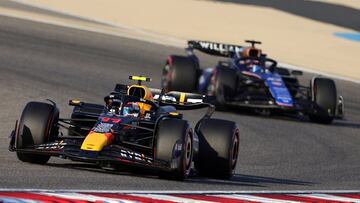How does Formula 1 qualifying work, how many rounds are there and how long does it last?
We thought it would be a good idea to compile a FAQ on how qualifying works. So, with no further ado, let’s get into it.

Before the packed stadiums, the crazed fans, the high-octane battles for first place and of course the champagne, there is the grueling trial faced in the qualifying rounds of Formula 1. With no team or driver exempt, a good result is of the upmost importance, as it literally determines the chances of success in the race itself.
What is Formula 1 qualifying?
Formula 1 qualifying is the process through which drivers compete to set the fastest lap time around a circuit during a specific time period. To be clear, the results of qualifying determine the starting order for the race, with the driver who sets the fastest lap time starting in pole position and the one with the slowest in last place.
How long does F1 qualifying last?
F1 Qualifying is split into three parts: Q1, Q2, and Q3. Each session lasts for a specific amount of time, with Q1 lasting 18 minutes, Q2 lasting 15 minutes, and Q3 lasting 12 minutes.
How many qualifying sessions are there in F1?
As mentioned above, Formula 1 qualifying is split into three sections, known as Q1, Q2, and Q3, during which drivers compete to set the fastest lap time around a circuit during a specific time period. Each phase is a knockout system, meaning the slowest five drivers are eliminated after Q1 and Q2, with the remaining 10 drivers competing in Q3.
How do F1 drivers qualify?
During qualifying, every driver is given a set number of laps in which they have to set their fastest time. The driver who sets the fastest time during Q1 progresses to Q2, while the slowest drivers are eliminated. The same process applies for Q2, with the fastest drivers progressing to Q3 and the slowest being eliminated. It’s important to note that in Q3, each driver has one final chance to set their fastest lap time.
How is the F1 starting grid determined?
The starting grid for the race is determined by the fastest lap times set during Q3, with the driver who sets the fastest time starting in pole position. Understandably, the remaining drivers are arranged are arranged in descending order based on their respective lap times.
What happens if a F1 driver fails to set a time during qualifying?
Quite simply, they don’t get to race. On the other hand, there are some circumstances where allowances are made such as if the driver in question experienced mechanical issues. In such cases, the driver is allowed to start from the back of the grid.
Are there any penalties in F1 qualifying?
Yes, they can and sometimes it can be harsh. If a driver violates the rules during qualifying, they may indeed be given a penalty. This can include having their lap time invalidated, being excluded from the session, or even being given a grid penalty for the race, which as you can imagine is not good. With that, we hope we’ve cleared up any doubts about how qualifying works.






